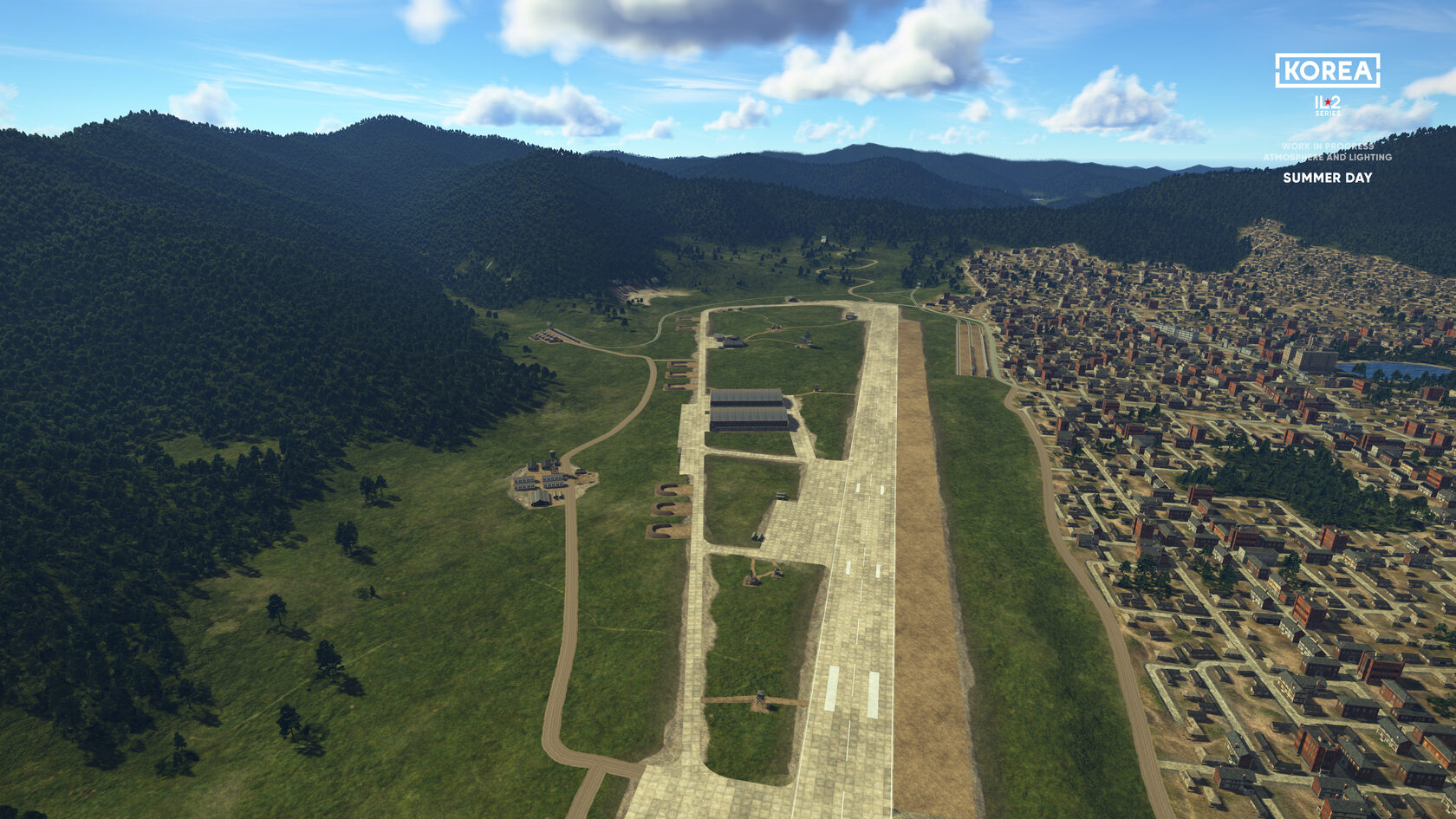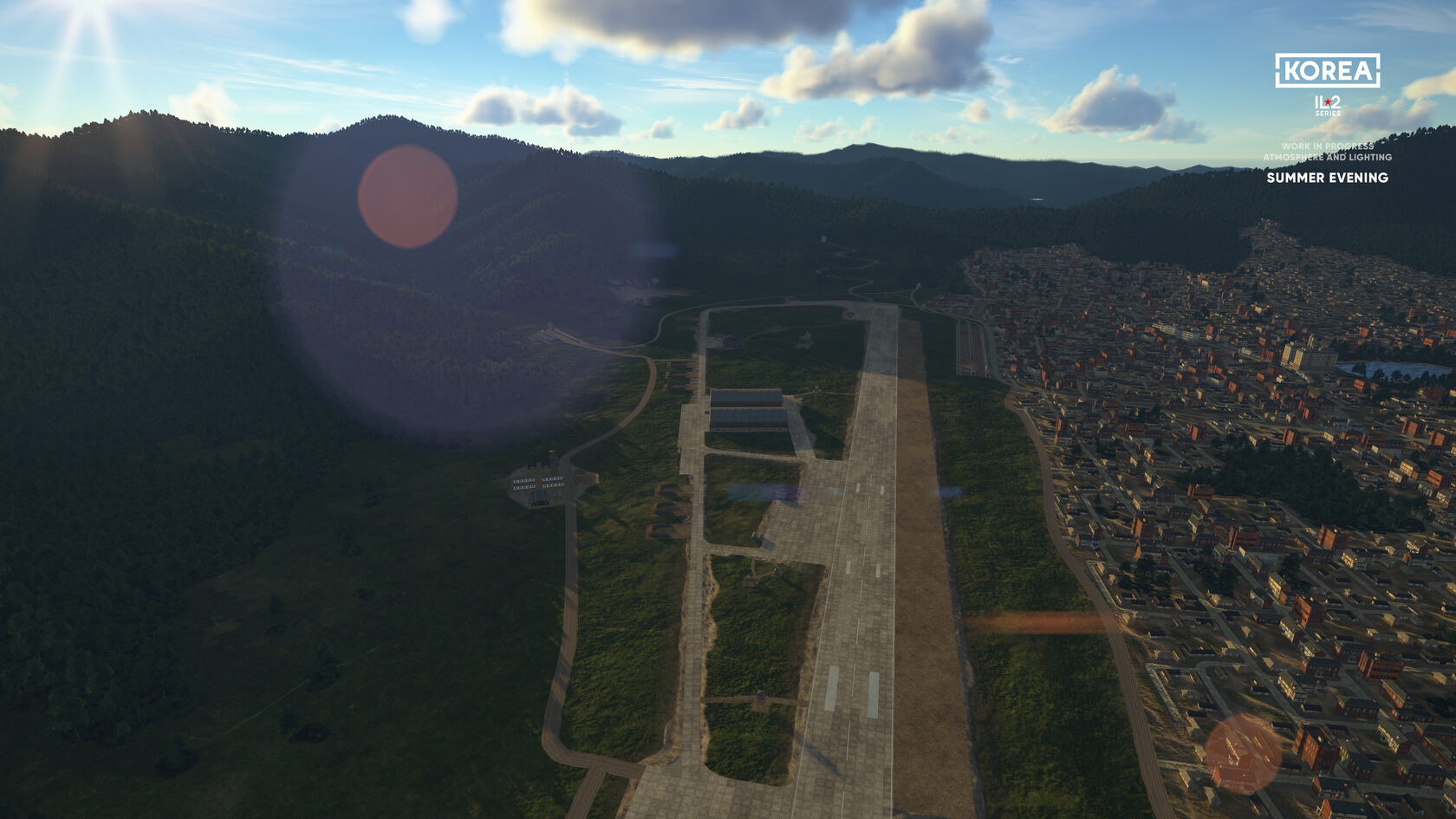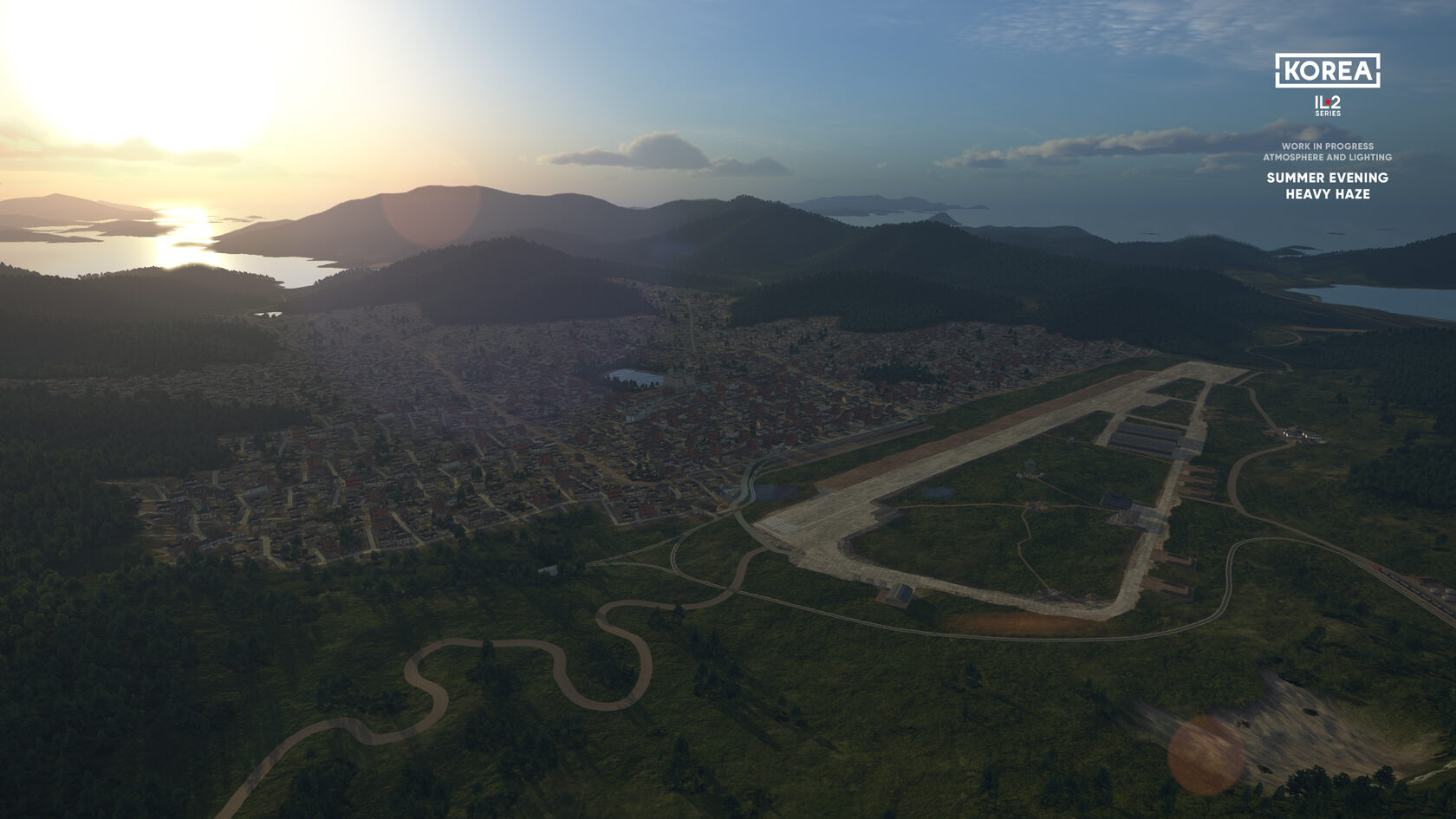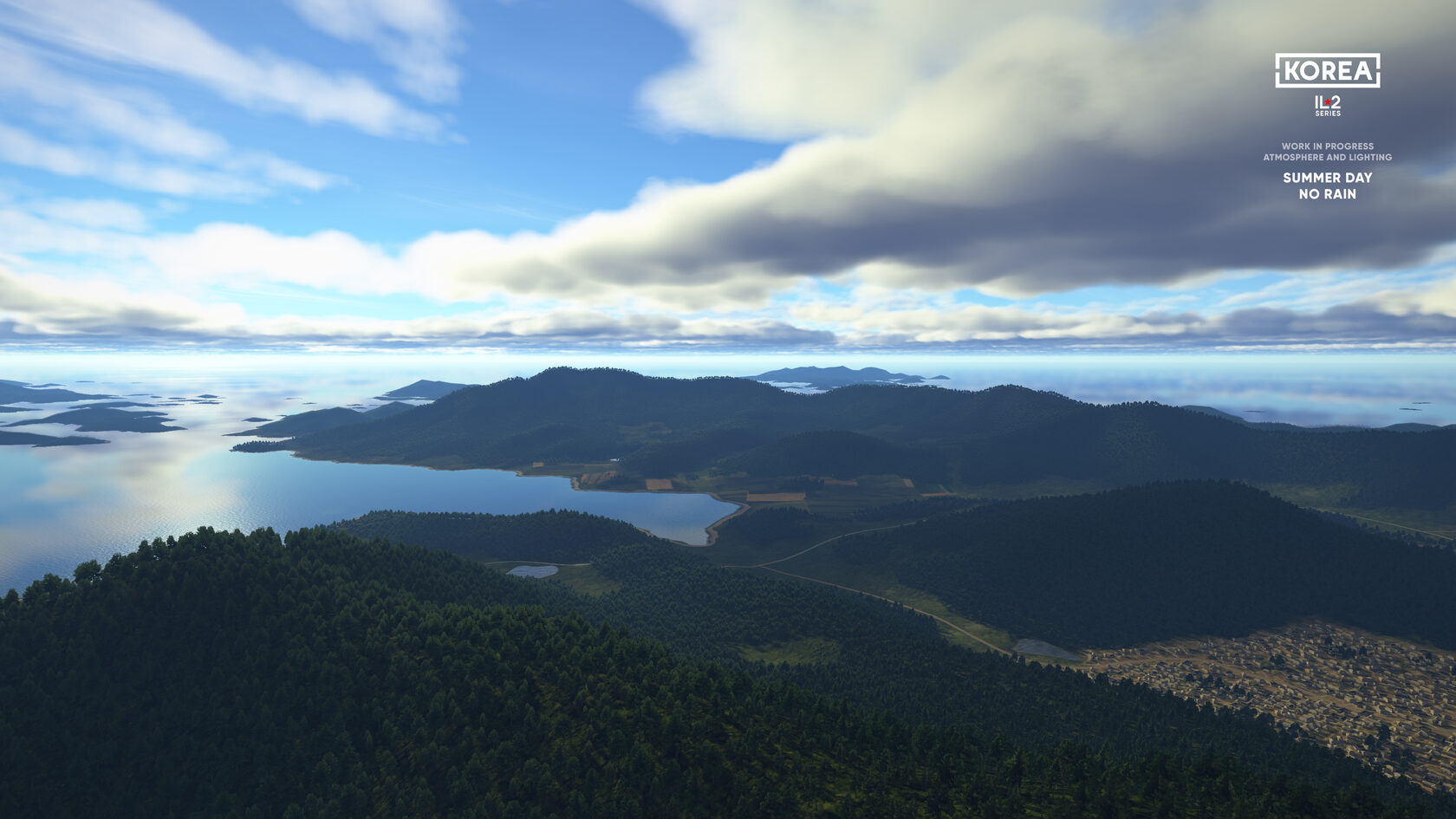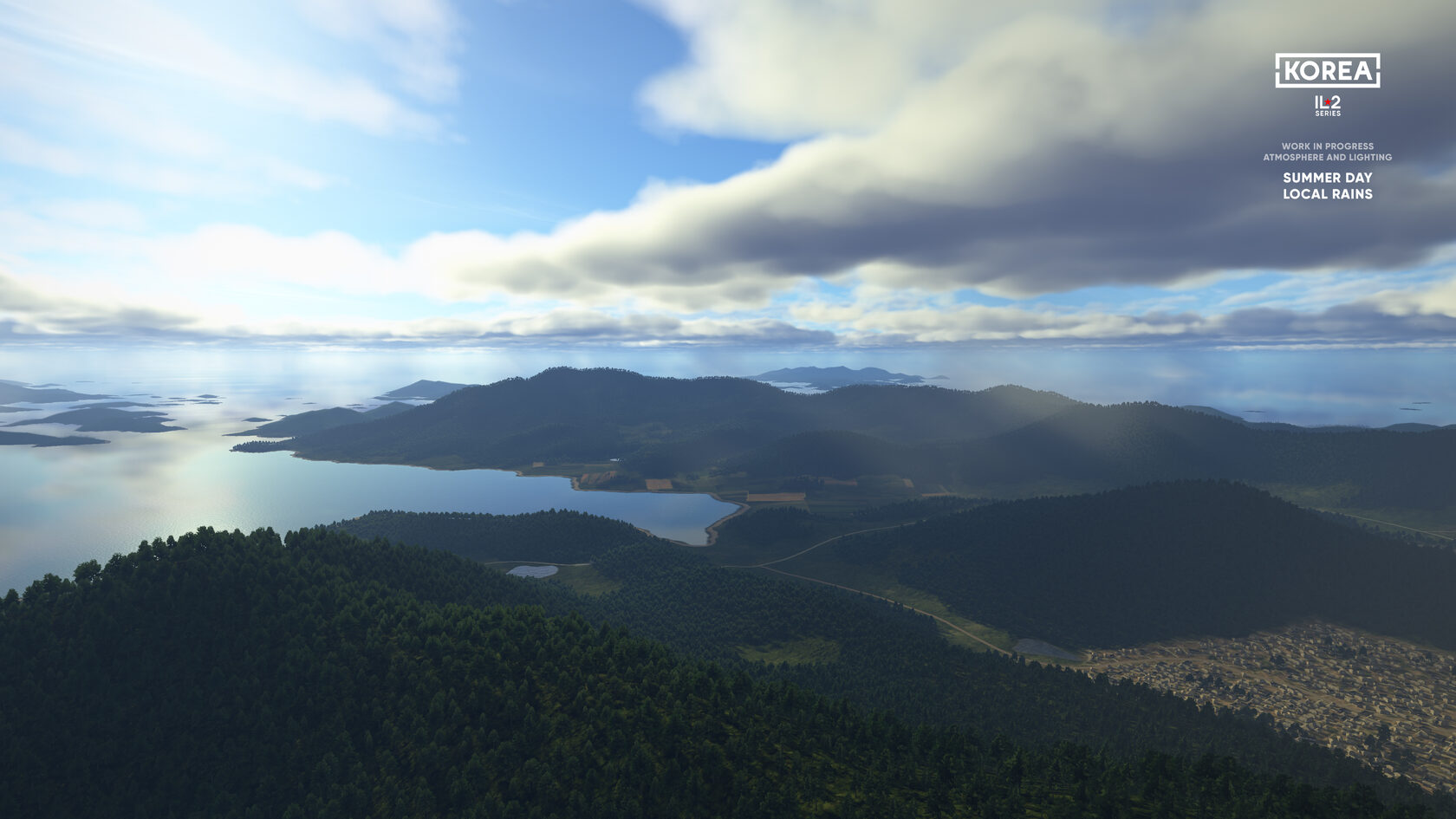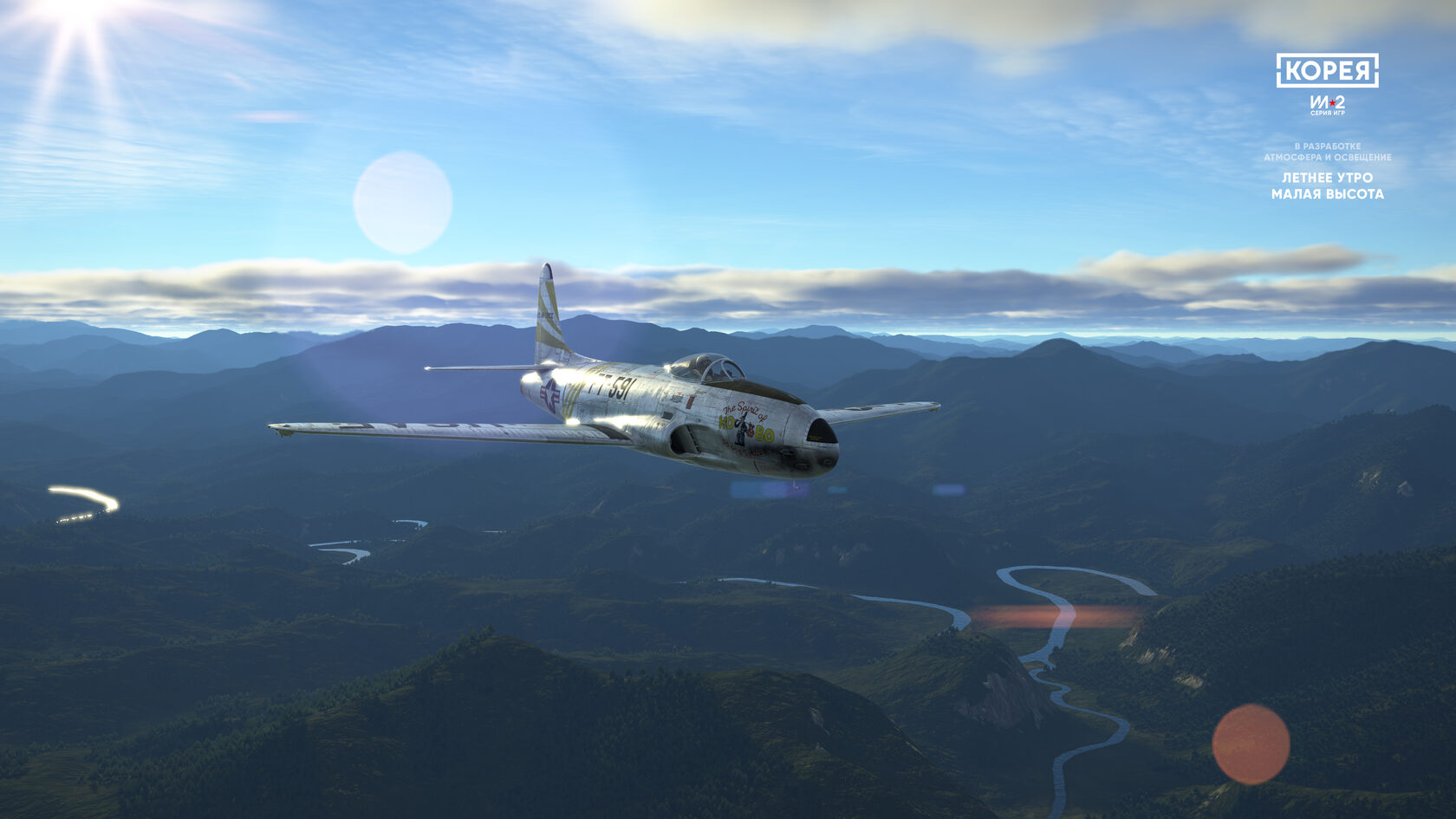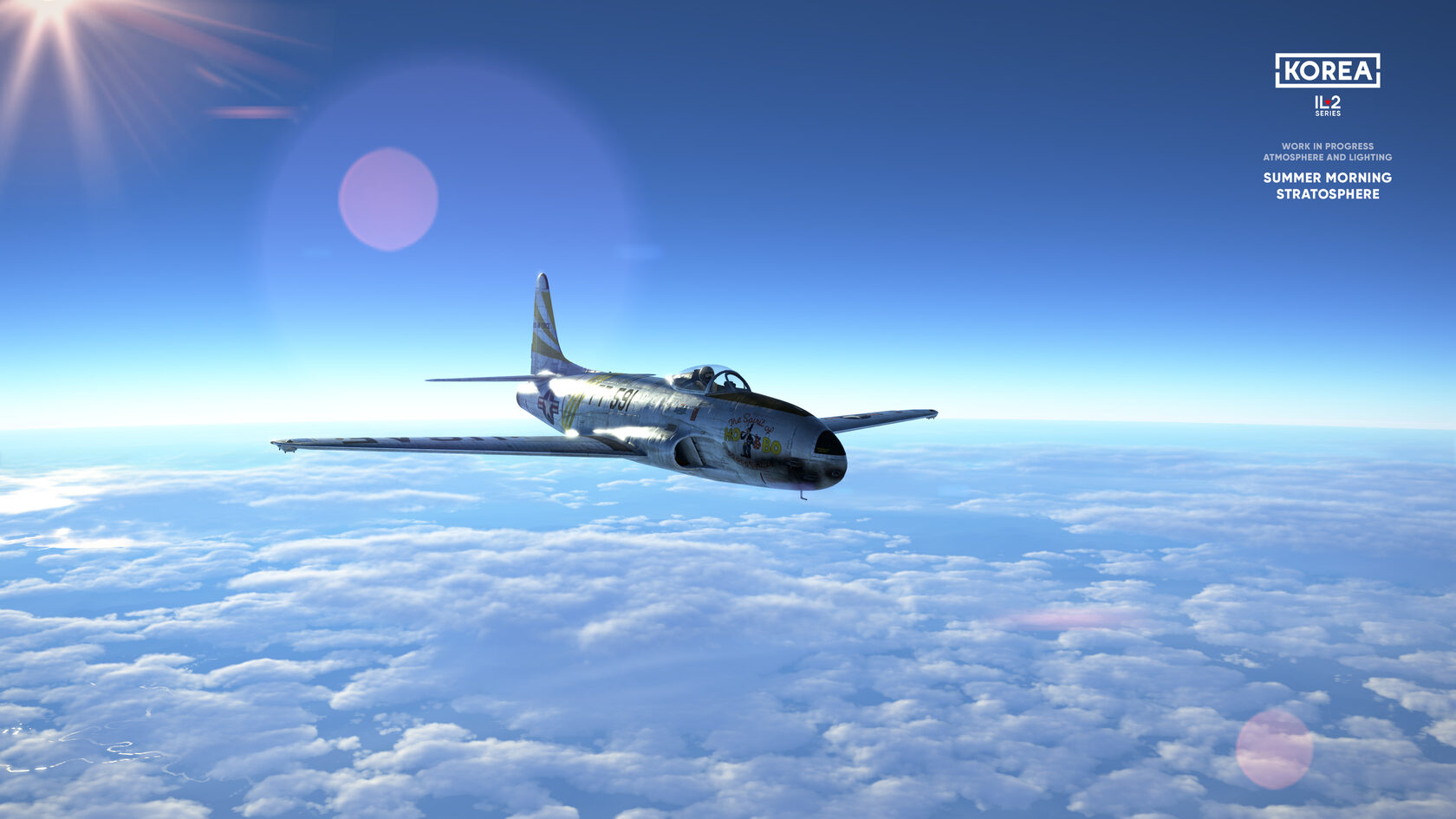Dev Blog #7
Hello everyone!
The credibility and believability of an aviation simulator as perceived by a player is not only determined by how realistically an aircraft’s behavior in the air and the operation of its systems are reproduced. It is also determined by how realistic the visuals the player sees are. In the case of an aircraft simulator, the key aspect is the visualization of the atmosphere as a complex image of the sky, the air separating the observer from distant objects, and the conformity between these aspects of lighting. These challenges have been attempted in various ways in previous generations of flight simulators. Still, the development of technologies has allowed us to create a unified method of modeling the physical propagation of light in the atmosphere and the illumination of the air volume by this propagation. This complex model is being developed and applied in our new "Korea. IL-2 Series" project.
The credibility and believability of an aviation simulator as perceived by a player is not only determined by how realistically an aircraft’s behavior in the air and the operation of its systems are reproduced. It is also determined by how realistic the visuals the player sees are. In the case of an aircraft simulator, the key aspect is the visualization of the atmosphere as a complex image of the sky, the air separating the observer from distant objects, and the conformity between these aspects of lighting. These challenges have been attempted in various ways in previous generations of flight simulators. Still, the development of technologies has allowed us to create a unified method of modeling the physical propagation of light in the atmosphere and the illumination of the air volume by this propagation. This complex model is being developed and applied in our new "Korea. IL-2 Series" project.
To get from the sky and atmosphere drawn by an artist to the image calculated by a physical model, it is necessary to consider many factors. Ignoring even the smallest of them leads to a serious deviation of the visual result from the reality that we observe with our own eyes in real life. The model must take into account the chemical composition of the atmosphere, the distribution of atmospheric parameters by layers, fine suspended particles in the lower atmosphere (dust, rain, fog, etc.), the inclination of the sun relative to the zenith position, the shading of the atmosphere by the Earth’s surface, and much more.
This task seems difficult in itself, and it becomes even more complicated when you consider that this model must work in real time when the computational resources of the processor and graphics subsystem are urgently needed for many other parts of the game. The development of a real-time solution requires all the experience, skills, knowledge, and, to a large extent, intuition to find such ways of optimization that will yield high performance while not causing any noticeable distortion of the visual result.
The result, the reward for all these efforts, is a unified, homogeneous environment for modeling natural lighting and the atmosphere, allowing you to see the most believable and realistic picture in the game. We believe we have achieved this result: while some competing sims use a similar approach, we have solved several subtle issues differently. This has resulted in a more balanced and visually high-quality result across a range of atmospheric and lighting conditions.
These screenshots demonstrate how certain atmospheric factors affect the overall picture. Note that the influence of each factor is not strictly local, but extends to the haze, the shadow of the natural light, its strength, the way the sky looks, the appearance of the sun in the sky, and much more. Such a complex and realistic effect of atmospheric parameters on lighting is only possible with a physical model. This is by far not the only big change in the graphics engine of the new project — we will tell you about others in the upcoming issues of the Dev Blog and Dev Brief.
Stay tuned for more updates!
Stay tuned for more updates!



